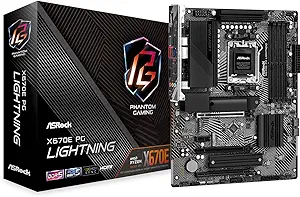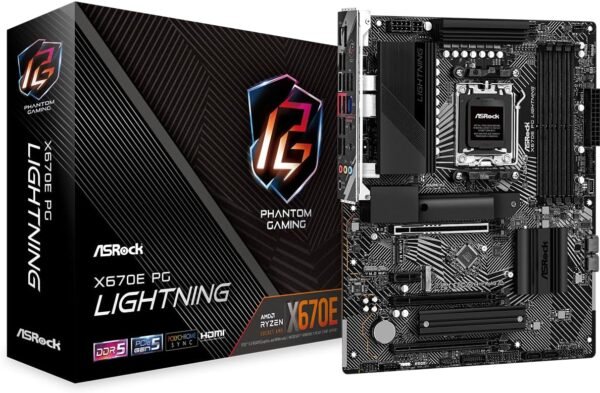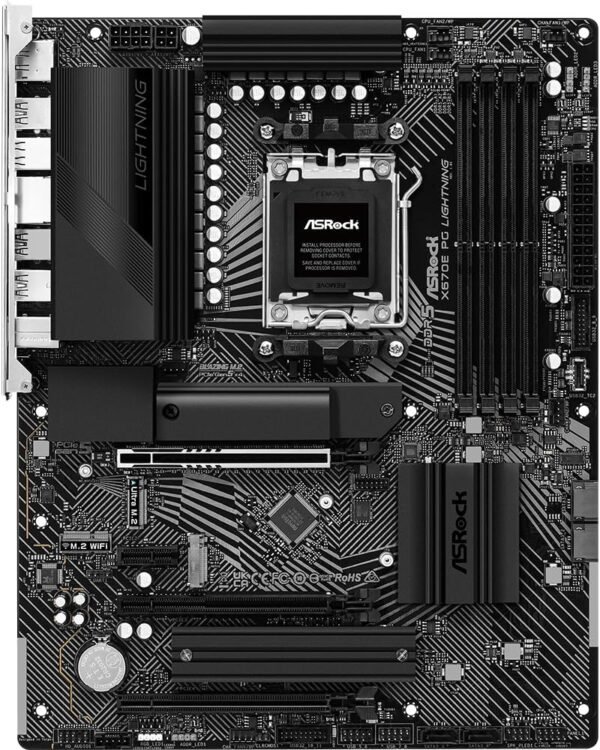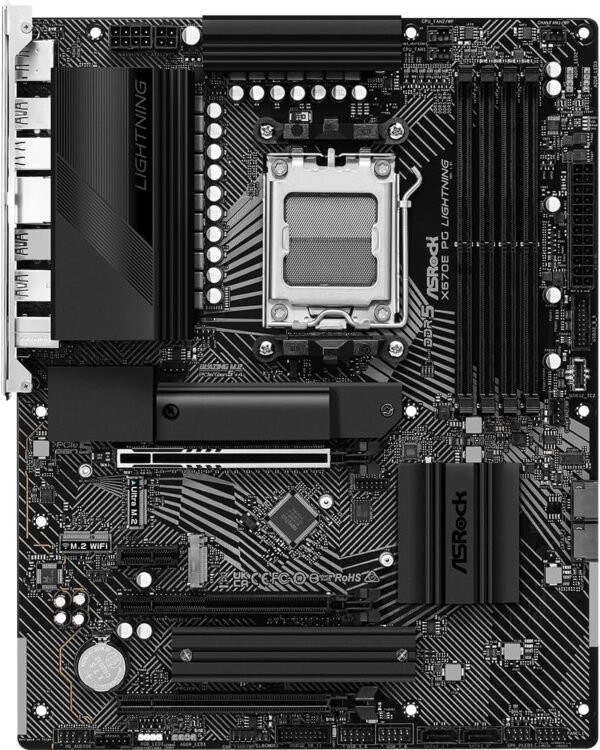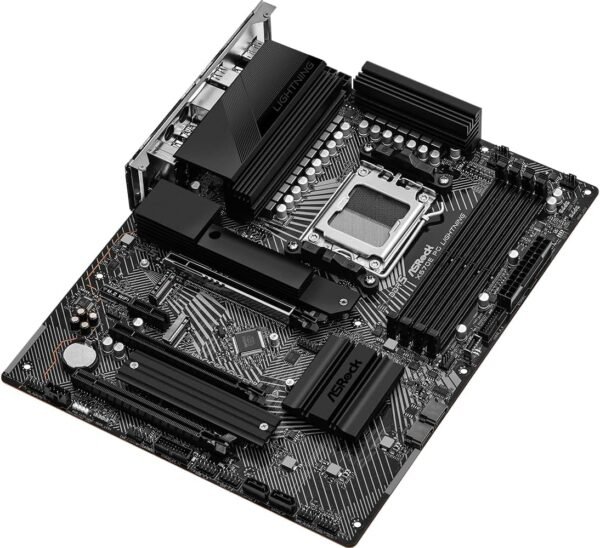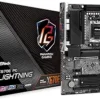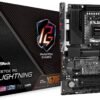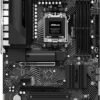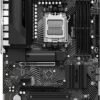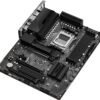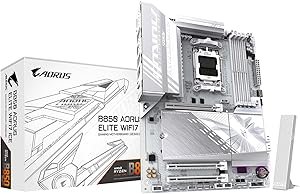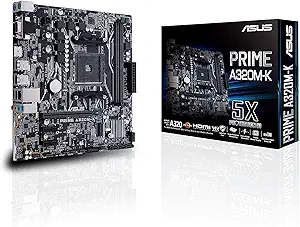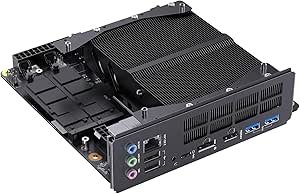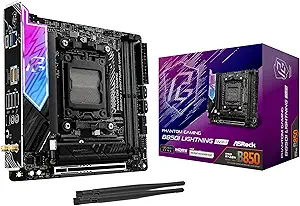ASRock X670E PG Lightning motherboard review for AMD Ryzen 7000 builds
ASRock X670E PG Lightning motherboard review for AMD Ryzen 7000 builds
- Exceptional durability ensures long-term performance, even under heavy usage.
- The efficient heat dissipation system keeps the motherboard cool during high-intensity tasks.
- Highly customizable BIOS settings provide flexibility for enthusiasts to fine-tune their setup.
- Robust connectivity options, including multiple USB ports, enhance compatibility with a variety of peripherals.
- Smooth multi-tasking capabilities due to superior memory handling and support for DDR5 RAM.
As an Amazon Associate I earn from qualifying purchases.
Description
Design and Build Quality: A Durable and Stylish Motherboard
The ASRock X670E PG Lightning certainly caught my eye with its sleek black-and-silver design, which feels premium without being over-the-top. Its ATX form factor makes it compatible with a wide range of PC cases, and I appreciated how the layout is intuitive for both novice and experienced builders. The dimensions of 13.8 x 11.7 x 2.8 inches make it standard-sized but packed with features. The inclusion of reinforced PCIe slots, especially the PCIe 5.0 x16 slot, shows that durability has been prioritized, which is a big deal if you’re installing heavier GPUs. The Realtek ALC897 audio codec delivers decent onboard audio, but audiophiles might still prefer a dedicated sound card.
One small gripe I had was with the placement of the M.2 slots; while they’re convenient for quick installation, the lack of pre-installed heatsinks on all of them meant I had to go fetch my own. The build quality, however, feels robust, and the 2.64-pound weight gives it a nice, solid feel without being overly heavy.
Performance and Features: High-End Specs for Demanding Users
Testing this motherboard with an AMD Ryzen 7000 series processor was a breeze, and the dual-channel memory support for DDR5 is a standout feature. With a maximum capacity of 128 GB, I felt confident this setup could handle intensive tasks like video editing and gaming simultaneously. One highlight for me was the three Hyper M.2 slots, which meant I could set up blazing-fast storage without compromise.
Another thing worth mentioning is the integrated AMD RDNA2 graphics (dependent on the CPU). While it won’t replace a dedicated GPU, it’s a lifesaver for troubleshooting or temporary builds. The seven USB 3.2 ports made it easy to connect all my peripherals, from external drives to VR headsets, without juggling ports.
The 2.5G Realtek LAN delivered stable and fast internet speeds, even during heavy online gaming sessions. However, the lack of built-in Wi-Fi was a bit of a letdown, especially at this price point. I ended up using a separate Wi-Fi adapter, which wasn’t ideal.
Key Benefits
- Support for AMD Ryzen 7000 processors, ensuring compatibility with the latest tech.
- Dual-channel DDR5 memory support for up to 128 GB, perfect for multitasking.
- PCIe 5.0 x16 slot, future-proofing your setup for next-gen GPUs.
- Multiple M.2 slots for high-speed storage expansion.
- 2.5G LAN connectivity, guaranteeing fast and reliable internet performance.
Areas for Improvement
- No built-in Wi-Fi, which may disappoint users looking for a fully wireless setup.
- Limited onboard heatsinks for the M.2 slots, requiring additional purchases for optimal cooling.
Installation Experience: Straightforward but with Minor Hiccups
Setting up this motherboard was fairly straightforward, thanks to the clearly labeled ports and slots. The BIOS interface was intuitive, and navigating it to enable XMP for my DDR5 RAM was easy. However, I did find that the SATA ports were a bit cramped when adding multiple drives, especially in smaller cases.
The pre-installed I/O shield was a welcome touch, saving me the frustration of aligning a separate shield. That said, cable management could’ve been smoother; the 24-pin power connector’s positioning felt a bit awkward in my mid-tower case.
Market Rivals: How Does It Compare?
When comparing this motherboard to competitors like the MSI MPG X670E Carbon WiFi or the ASUS ROG Crosshair X670E Hero, the differences become clear. The ASRock model excels in affordability while still delivering high-end features like PCIe 5.0 support and multiple M.2 slots. However, it lacks Wi-Fi, which both the MSI and ASUS options include.
The ASUS ROG Crosshair X670E Hero offers more comprehensive cooling solutions and a slightly more polished BIOS interface, but it comes at a much higher price. Meanwhile, the MSI MPG X670E Carbon WiFi strikes a balance by including built-in Wi-Fi and similar specs, but its VRM cooling solution felt less effective under load.
True Value: Is It Worth It?
For what you get, the ASRock motherboard offers impressive value for money, especially if you’re focused on performance and expandability. While it’s not the cheapest option out there, I think the features like PCIe 5.0, DDR5 support, and multiple USB 3.2 ports justify the investment. If built-in Wi-Fi or more extensive cooling options are must-haves for you, you might want to look elsewhere.
That said, I found the overall price-to-quality ratio to be highly competitive when stacked against more expensive alternatives. This motherboard feels like it’s designed for gamers, content creators, and anyone who wants a future-proof setup without breaking the bank.
Additional information
| Processor | amd_ryzen_7 |
|---|---|
| RAM | DDR5 |
| Memory Speed | 2400 MHz |
| Number of USB 20 Ports | 4 |
| Brand | ASRock |
| Series | X670E PG LIGHTNING |
| Item model number | X670E PG LIGHTNING |
| Item Weight | 2.64 pounds |
| Product Dimensions | 13.8 x 11.7 x 2.8 inches |
| Item Dimensions LxWxH | 13.8 x 11.7 x 2.8 inches |
| Computer Memory Type | DIMM |
| Manufacturer | ASRock |
| Language | German |
| Country of Origin | USA |
